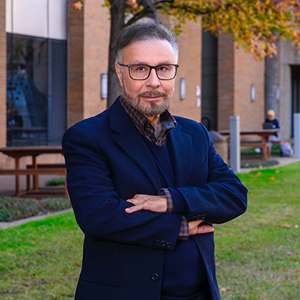Dr. Ardeshir Anjomani Publishes New Research Articles in Planning and Urban-Related Journals

Dr. Ardeshir Anjomani, Professor of Planning, recently published new research articles in planning and urban-related journals. Dr. Anjomani and recent alumni Dr. AlQuhtani have published a paper “Do Rail Transit Stations Affect the Population Density Changes Around Them? The Case of Dallas-Fort Worth Metropolitan Area” in the Sustainability 2021, 13(6) . For approximately 15 years, both Dr. Anjomani and Dr. AlQuhtani studied population density changes in 454 block groups within a one-mile radius around rail transit stations in the DFW metroplex. The research demonstrated an increase in residential density surrounding transit stations if there were developments or policies to increase racial mix and employment opportunities with mixed-use Transit-Oriented Development (TOD) commercial activities. Therefore, transit development would attract employed people of diverse race, ethnicity, and socioeconomic groups while enhancing commercial activities to aid economic growth and transit use in the region. Dr. Anjomani suggests that urban planners and policymakers use these findings to adopt specific policies for increasing density, advancing transit system success, promoting transit usage, and sustaining station area development.
Dr. Anjomani published an additional article titled, “An integrated land-use/transportation forecasting and planning model: A metropolitan planning support system,” in the Journal of Transportation and Land Use (JTLU). Previously, Dr. Anjomani worked on an urban development model for several years with the help of TXDOT funding. His article proposes a planning and support system (PSS) to help numerous issues in urban areas, such as the effects of future developments on environmental sustainability, economic development, and stakeholder input. Dr. Anjomani’s PSS hopes to ease the use for decision-makers and better integrate Metropolitan Planning Organizations’ (MPOs) transportation planning effort, including other regional planning efforts. Ultimately, the PSS helps institutions prepare metropolitan or subregional plans and demographic analysis for various planning and policy making purposes. Dr. Anjomani's PSS provides a significant contribution through its open structure and ability to elicit the stakeholder's input during the process, particularly in the activity allocation of future developments. In addition, the PSS further facilitates the planner's involvement in the planning and policy making activities of a metropolitan area. Open features, such as a GIS land and environmental variant as the base of analysis, provide an opportunity for inclusion and participation of representatives, decision-making bodies, stakeholders, and the public in various aspects of the planning process.